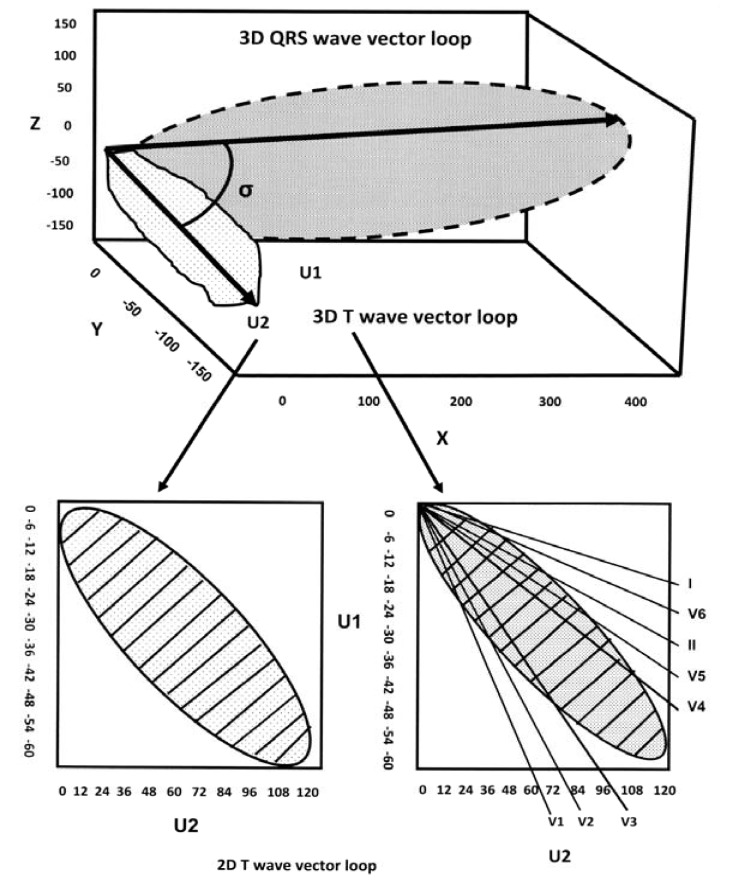Fig. (1).
A schematic 3-dimensional view of the QRS and T-wave vector loops. The main vectors of the 2 loops are depicted by arrows and the angle between them is shown (spatial QRS-T angle). Bottom left, the T-wave loop is shown in a 2-dimensional plane with the unipolar axes U1 and U2 and is divided into marked subdivisions. In this plane a hypothetical rectangle encompasses the T-wave loop and is theoretically divided into 100 subdivisions. The T-wave loop dispersion is expressed by the number of the subdivisions that it passes. In this example, the T-wave loop dispersion is 35. The T-wave amplitude is calculated as a fraction of the encompassing rectangle and it is marked by stripes. Bottom right, the reconstruction of the T-wave loop from the vectors of the classical 12-ECG leads. The T-wave morphology dispersion is calculated by the averaging angle between all possible reconstruction vector pairs. As an example the angle between V3 and V4 reconstruction vectors is shown in figure (marked by point 0). Modified from Reference [37].

